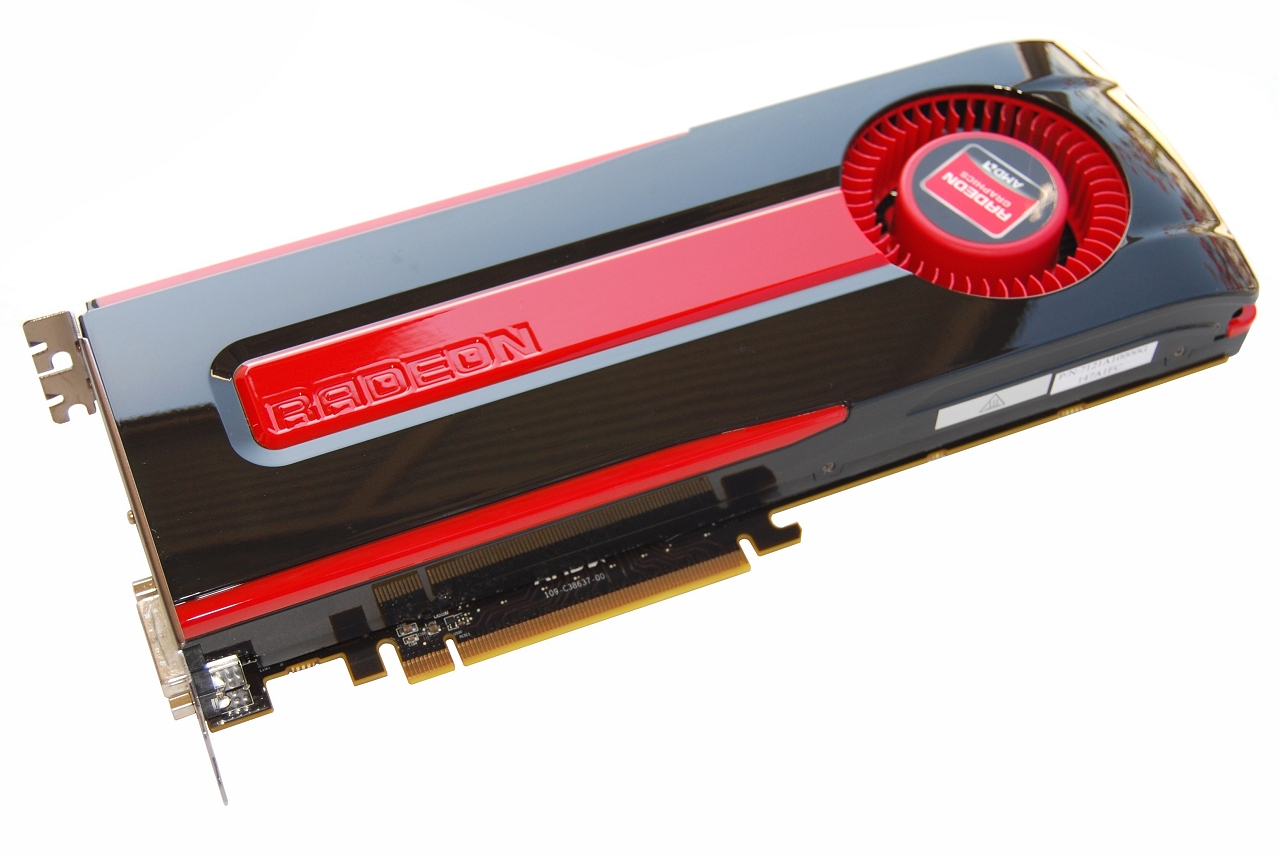Radeon HD 7970 in Detail
The Radeon HD 7970 measures 27 cm long (10.6 in), a typical length for a modern high-end graphics card. For reference, the HD 4870 X2 measured 28cm long, as did the more recent HD 5870. AMD's latest card is also the same length as the HD 6970 and GTX 580.
The GPU core is clocked at 925MHz, 5% higher than the HD 6970, and the GDDR5 memory operates at the same frequency of 1375MHz (5.5GHz DDR). Still, pairing that frequency with a 384-bit memory bus gives the HD 7970 264GB/s of theoretical bandwidth, a 50% advantage over the HD 6970.
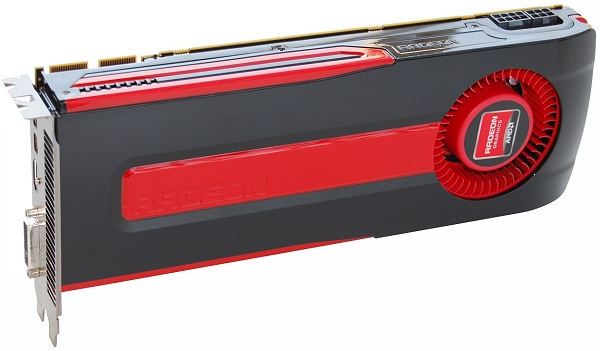
While the HD 6970 came loaded with a 2GB frame buffer, the 7970 has been upgraded to 3GB. We've found that when using multi-monitor setups at extreme resolutions, the larger buffer of AMD's cards provide a significant advantage over Nvidia's, which are limited to 1536MB for the most part.
The HD 7970's core configuration also differs from the 6970's. The new card carries 2048 SPUs, 128 TAUs and 32 ROPs, up 33% from 1536 SPUs and 96 TAUs.

Not only is the HD 7970 the first 28nm GPU to market, it's also the first PCI Express 3.0-compatible card. The new interface spec doubles its predecessor's bandwidth to 32GB/s. Unfortunately, no current processors or chipsets support this technology, so we'll have to test it down the road.
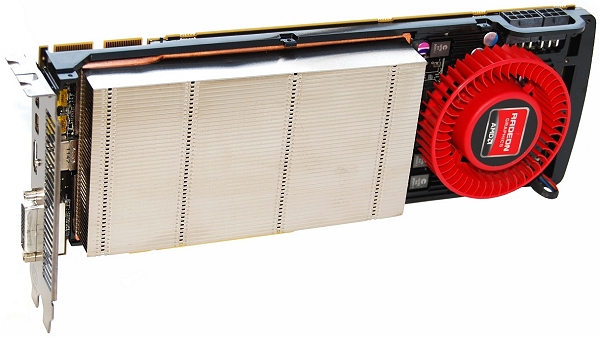
Cooling the "Tahiti XT" GPU is a massive aluminum vapor chamber heatsink with 41 fins measuring 15.5cm long, 8.5cm wide, and 2.5cm tall. The vapor chamber design was first implemented by the Radeon HD 5970 and has since been adopted by Nvidia's GTX 580 and GTX 570. Heat is dispersed by a 75x20mm fan that pulls air in from the case and pushes it out the back.
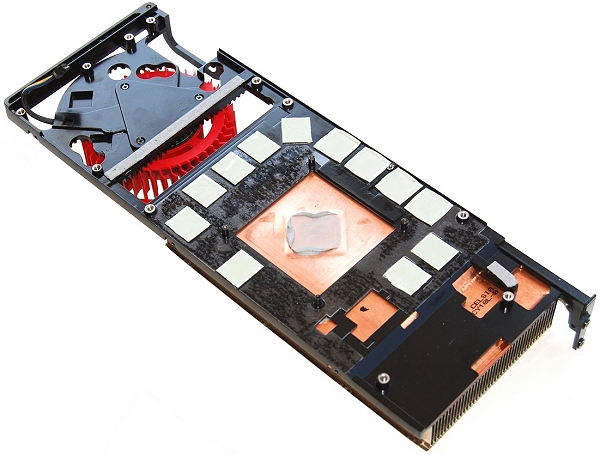
The HD 7970's fan operates quietly for the most part, but despite the card's impressive idle consumption, it still chugs up to 210 watts under load, so the fan does kick up during a heavy gaming session.
The heatsink and fan are enclosed in a custom housing that conceals the entire graphics card, a common practice for AMD's flagship products and one we tend to like. Nvidia has also done this in the past though the GTX 580 didn't receive such special treatment.

To feed the card enough power, AMD includes 8-pin and 6-pin PCI Express connectors – the same setup you'll find on the HD 6970 and GTX 580 and other demanding boards.
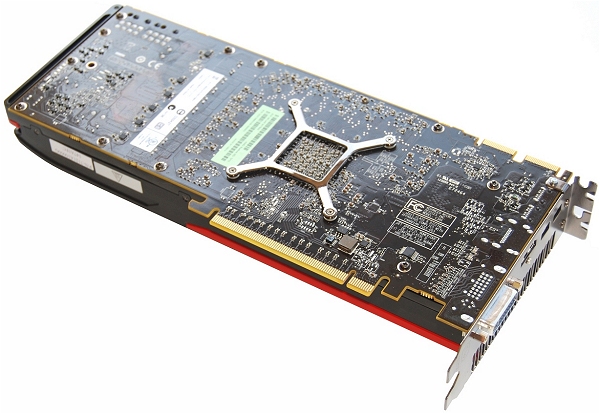
Naturally, the HD 7970 supports Crossfire and so there are a pair of connectors for bridging two or more cards together. The only other connectors are on the I/O panel. Our AMD reference sample has a dual DL-DVI connector, a single HDMI 1.4a port and two mini-DisplayPort 1.2 sockets.

All HD 7970s can support a max resolution of 2560x1600 on up to three monitors. With a multi-stream hub using the mini-DisplayPort 1.2 sockets, the card can power up to six screens.
